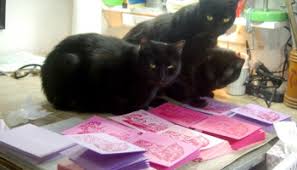Your fourth grade teacher probably urged you to include details in your writing. “Don’t write about a car,” she may have said, “but a red car, a ’67 Mustang. Be specific.” When do details enhance and when do they hinder?
Writing Tip for Today: Writing details requires good judgment. Here are some suggestions for including or omitting details:
That Red Car
For writers, being specific can mean the difference between communication and confusion. For instance, if you write a scene with two cars in it, readers need a way to tell them apart. If one is red and the other is white, readers can track your description.
Go a step further and give readers an emotional jolt by including a detail which evokes a certain mood, era or tone. If your character is a car buff, chances are that he won’t think of a car. He’ll think of that 350 v-eight with four on the floor. Giving these specific details gives readers a better sense of the character as well as an emotionally satisfying detail (well, at least if you’re a car guy).
We’re all humans, but we all interact with our environments in different ways. A character who lives near a Deep South swamp sees and hears different stimuli than someone from the desert Southwest. Writing details that plunge readers into that fictional world helps to keep them engaged.
How Much is Too Much?
Details can lift your writing, but they can also sink your pace. For instance, if you detail every step of a person leaving to drive to work, readers will head for the exits. She picked up her keys and walked to the car. She opened the door of her new gray Mercedes and stepped in with her right foot wearing red three-inch spike heels. She put the keys into the automatic ignition.” And so on.
Readers will be irritated with writing like that example. They may want to know it’s a gray Mercedes, but after that, the details of her entering the car become either boring or worse, readers will mistakenly think a detail is some kind of clue. If that detail doesn’t then pay off, readers feel let down.
The way to decide if details are worthy of inclusion is to ask yourself if readers will be confused without it; if you’ve included too few or too many details to create a picture, feeling or reaction in the reader. Including details just because you like lists of things or because you’re afraid readers won’t get it only slows down readers as they search for the meaning behind those specific things mentioned.

Ask yourself if a detail is critical to the story.
Balance is Key
Your readers are smart. You shouldn’t have to hammer them over the head, reminding them about details. If you paint a specific picture with finesse, readers will remember. Use details to deepen a character, to create a world and to advance your story.
When you draft your writing, you can include as many details as come to mind. I don’t believe in filtering my writing when I create. But as I revise, I’ll often discover competing descriptions or details. If I do, I choose the stronger details and omit the rest. Another handy tool is to revise to the Rule of Three. For some reason, we like things in threes, and threes satisfy readers.
No matter how many or how few details you write, the most important idea is to be sure the detail contributes to your story. Avoid writing details that seem extraneous or that are only there for atmosphere—as I said above, readers are always searching for clues and meaning. A detail that goes nowhere only frustrates. But get details just right, and your readers will be transported into the world you’ve made. If you supply the perfect details, they may never want to leave.





